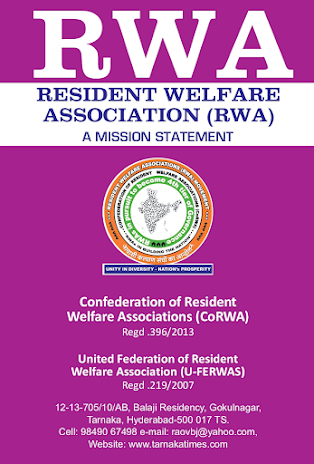A resident welfare association (RWA) is essentially a group housing system in a layout spread over an area or built into floors of apartments in a building. Whether the houses are laid vertically or horizontally, these neighbourhood communities are registered under cooperative laws or as civil associations. RWAs are typically registered under the Societies Registration Act, 1860. They are entirely self-financed and self-managed. RWAs are the finest expression of civil society consensus, an answer to urban problems, a tool for community building and for self-management and direct democracy. An urban resident is endowed with intensive communication skills, fast transport, and uninhibited relations with other human beings. They can play a
vital role in building up a knowledge-based society.
Unfortunately, the urban residents are under-represented in all the three tiers of governance, namely the central, state, and local. The RWAs should therefore form a fourth tier of grass-root, self-governing micro-urban communities with participatory functions (Source: Rao VB J Chelikani, www.tarnakatimes.com, 2018). An initiative was however taken in this direction in 1998, by the state government of Delhi by introducing a system called the Bhagidari System. The objective was to promote citizen–government partnership and to create reater transparency and accountability in administration’ in order to improve ‘the quality, efficiency and delivery of public services’. In fact, the Bhagidari system has won the 2005 UN Public Service Award.
Read full article here







0 Comments